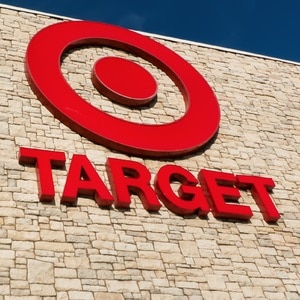 The aggressive expansion of German deep-discount grocery chains Aldi and Lidl into the United States, combined with Amazon’s entry into the market with its Whole Foods acquisition, has launched another round of furious price cuts on US grocers’ shelves. Foremost amongst these hatchet-wielders is department store retailer Target Corp, which has announced a move away from repeated sales and discount offers to a simplified “everyday low pricing” strategy on grocery and household items to better compete with the deep discounters. Will Target customers respond to the play increased frequency and basket size? Is there any end to the grocery price wars? Stay tuned.
The aggressive expansion of German deep-discount grocery chains Aldi and Lidl into the United States, combined with Amazon’s entry into the market with its Whole Foods acquisition, has launched another round of furious price cuts on US grocers’ shelves. Foremost amongst these hatchet-wielders is department store retailer Target Corp, which has announced a move away from repeated sales and discount offers to a simplified “everyday low pricing” strategy on grocery and household items to better compete with the deep discounters. Will Target customers respond to the play increased frequency and basket size? Is there any end to the grocery price wars? Stay tuned.
By Rick Ferguson
Target announced the move on a September 8 blog post, in which the retailer pledged to lower prices on “thousands” of items “from cereal and paper towels to baby formula, razors, bath tissue and more” to “cut through the clutter and provide guests with great everyday value.” Money quote from Target executive vice president Mark Tritton:
“We want our guests to feel a sense of satisfaction every time they shop at Target. Part of that is removing the guesswork to ensure they feel confident they’re getting a great, low price every day. We’ve spent months looking at our entire assortment, with a focus on offering the right price every day and simplifying our marketing to make great, low prices easy to spot, all while maintaining sales we know are meaningful to guests. And guests are taking note, appreciating much easier, more clear—and more consistent savings—at Target.”
If Target was hoping for a positive PR bump from this move, then it initially backfired, as the share values of Target, Walmart, and Costco all took a Friday hit at news of this latest salvo in the grocery price wars. Target’s shares eventually recovered, but skepticism of the move persists. Many analysts recall the infamous reign of former JC Penney CEO Ron Johnson, who left his celebrated tenure as head of Apple Retail to turn around the flagging department store chain by eliminating coupons and sales promotions in favor of simple, everyday low prices.
It turned out that JC Penney’s customers actually liked coupons and deal-shopping – and instead of flocking to JC Penney to take advantage of all of the simple pricing transparency, they abandoned the retailer in droves. Target may have had this lesson in mind when they included the caveat “Don’t worry—we’re not ditching promotions! We’re just making sure to offer only our best, most compelling sales” in the blog post.
The big question for any price-slashing move is, of course, whether the retailer will only encourage cherry-picking by shoppers who only come in for the cheap boxes of Honey Nut Cheerios and forgo spending time in Target’s fashion and home goods aisles, where the retailer hopes to make up the difference. There is some evidence that consumers are starting to show a willingness to pay more for premium goods, and Target hopes to enjoy the cross-shopping benefit; in Target’s second quarter earnings call, CEO Brian Cornell told investors that the company “saw a meaningful increase in the percent of our business done at regular price and a meaningful decline in the percent on promotion.”
That news sounds encouraging! Some analysts have therefore applauded the move, as this money quote from Cowen & Co. analysts to Retail Dive reveals:
"In our view, [Target] is following its strategy to invest in price and is taking strides to improve its value perception and increase pricing clarity, which we view as significant opportunities for the retailer to grow trips, basket, and customer loyalty.”
Looking at Target’s recent moves collectively – simplifying their pricing structure, folding Cartwheel into the Target app, investing $3 billion over the next three years in store refreshment – it appears that Target is doing what it should be doing to fight the twin threats of deep-discounters and Amazon: focusing on the retail experience. Despite what the doomsayers predict, physical retail isn’t going away – and the winners in the retail future will be those that reinvent the physical retail experience and blend it seamlessly with the digital.
If Target is missing a trick, it may be in its egalitarian approach to the retail experience. Yes, every retailer wants to deliver a baseline compelling store experience to every customer. But what about Target’s best customers? Another way to set themselves apart from Walmart and the German upstarts is to provide a personalized, differentiated experience to their most loyal customers – Target shoppers who feel an attachment to the brand, and who shop there as often as they can. That provision means offers, rewards, and recognition targeted at the level of the individual. These are the customers, after all, who bestowed upon Target the semi-ironic affectionate moniker “Tar-zhay,” and they’re the customers who can help Target thrive in the years to come.
Whether Target’s pricing strategy moves the needle or not is an open question. Overall, the retailer is moving in the right direction – they just need to bring their best customers along for the ride.
Rick Ferguson is Editor in Chief of the Wise Marketer Group and is a Certified Loyalty Marketing Professional (CLMP).




